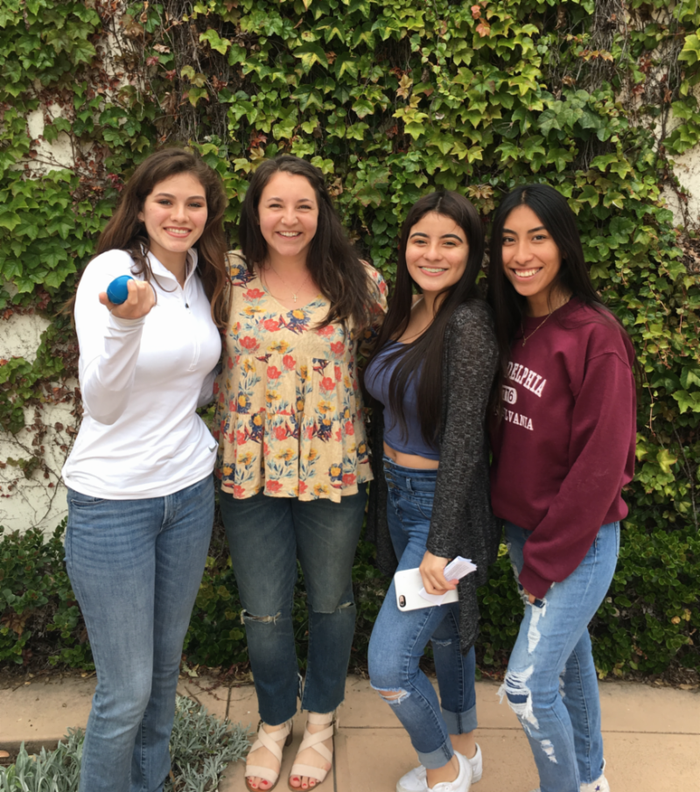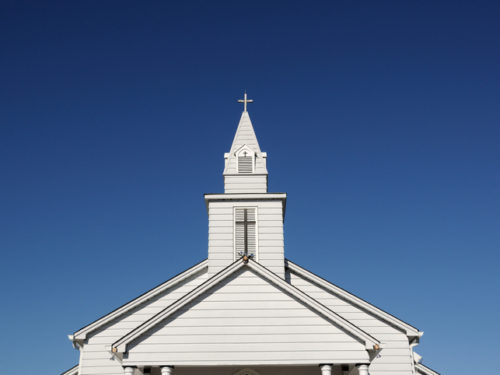 Uncategorized
Uncategorized
In light of the multiple thousands of denominations existing over and against Je...
 Uncategorized
Uncategorized
By: ECO Team
My name is Chloe and I am a part of Goodland Church, a church plant in Santa Barbara, California. I teach English and lead Young Life at Santa Barbara High School, and spend as much time as possible hanging out with my pastor, Becky, gleaning whatever I can from her about church planting.
I came to Santa Barbara about five years ago, the same way that many people come to Santa Barbara – running away from hard things and hard people, attracted to cotton-candy sunsets and bougie coffee and the anonymity of a new city. Over the next four years at Westmont College (a teeny Christian, liberal-arts college in the hills in Santa Barbara) I studied a ton, met my best friends, and failed again and again to find satisfaction in the definition of “Christian community” I was hearing. While Westmont does a lot of things right, it falls short (as most of us do) to join together the commandment to love our neighbors with the desire to grow deeper in communion with the Lord. I found we studied the Word well, but rarely shared it.
This inattention to the call of evangelism burned me, as someone who first heard the Gospel as a 16-year-old at a Young Life camp and desperately needed the work of evangelism. So, to cool this burn, I led Young Life while studying to be a teacher, planning to turn a teacher’s desk into a pulpit of it’s own.
One day during my junior year in college, I met a couple of girls at the local high school, and we grew to be great pals. They were deeply curious about Jesus, and adamantly opposed to Christians; but told me I was alright, and they loved Young Life. One day, shockingly, they agreed to go to church with me. It was my naïve expectation that they’d sit still with wide-eyes during a sermon they would eat up, and afterwards they might ask big, good, even unanswerable questions about salvation and sanctification.
I was still deeply bothered by the lack of Christian interest in evangelism, and having a hard time finding much comfort in any of my local churches. I had been at this church where I took the girls for about a year. It is a good, theologically sound, lovely church that I still think of fondly. Sitting in the back of the sanctuary with my girls next to me, I was immediately aware we stuck out from the crowd. For one thing, my kids dressed differently from the seasoned church-goers, wearing black hoodies and Vans and jean shorts, but they also looked different as beautiful Latinas among a crowd of mostly white people (myself included).
As the service ended and we got up to grab a donut-hole and go home, I had forgotten the contrast my girls made with the rest of the congregation; my girls didn’t, asking “Why is everyone staring at us?” Wide-eyes, big, good, unanswerable question. This church—this good, Gospel-proclaiming church—had insiders and outsiders. I could pass as an insider with enough knowledge of the Bible, churchy-casual clothes, and white skin. My girls didn’t know what exactly made them outsiders, but they knew they were. My heart broke with this question.
Soon after this, I was introduced to Becky and felt a clear and demanding call to join her in our Goodland church plant. As I’ve read and listened, and observed her and other church planters innovate in the seemingly paralyzed field of church, my vocabulary to articulate the divide of my girls’ simple question has grown. I’ve realized that it is not the act of standing out or even the act of being stared at that bore the pain of the question, but what affected me was the underlying understanding within the congregation that church was for discipleship, and other stuff—be it Young Life or Intervarsity or youth group—was for evangelism.
My sweet girls stood out amongst the other churchgoers because they were still in the “evangelism stage,” but participating in a discipleship experience. To be fair, my kids are in the need of the consistent and kind work of evangelism, but so am I. I have been following Jesus for about six years, and I’ve never grown out of my need to learn simple, evangelistic truths: I have been created by a good, good Father on purpose, for a purpose. I am known fully in my brokenness, and I need a Savior. I have a Savior, and because of his love-made, willing sacrifice for us, I live and will live fully by continuing to rejoice in and work towards the redemption of God’s kingdom with his people.
Church planting has proven to be a challenging endeavor, full of trial-and-error in a world that loves order and plans. Our little church is full of quirks and messes and restarts, because that’s what happens when a bunch of people, deeply in need of the work of evangelism, come together to create disciples. I bring my girls to our Sunday meal and gathering whenever they’ll come with me, and I have to check my own perceptions of them and their belonging every time. I’ve found myself walking into our gathering, praying that the community wouldn’t know they were “outsiders,” and in His graciousness, God reminds me that they couldn’t possibly be so. Every time they are with me, I turn around to see other people webbing a community around my girls, reminding me that they belong, like I belong.
Our church is not perfect, and will not single-handedly mend the traditional tear between evangelism and discipleship, but every time I witness adults at church asking my angsty high school friends about school and sports, pray with them, and remember them, I see change being made in my city. I see disciples being formed in teenage girls. I see the Kingdom of God growing by changing the definition of who fits into the typical mold of what a “church-person” looks like in Santa Barbara.
 Uncategorized
Uncategorized
In light of the multiple thousands of denominations existing over and against Je...
 Uncategorized
Uncategorized
My first pastoral call was to the First Presbyterian Church of Winnfield, a litt...
 Uncategorized
Uncategorized
This semester, I’m teaching “The Holy Spirit and the Church.” Our primary textbo...